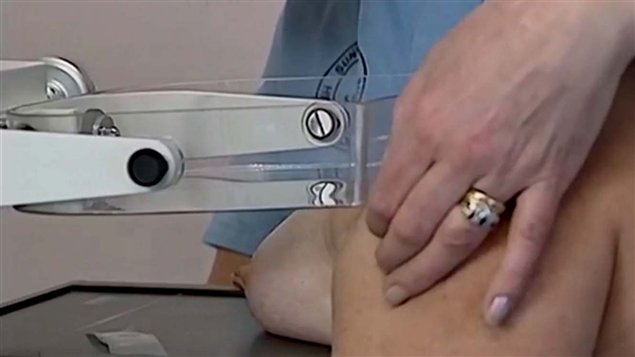Canada’s largest and most populous province is going to change some of the technology used in detecting breast cancer.
A major study published this week in the journal Radiology compared two types of digital mammography, DR-direct radiography, and CR-computer radiography against the traditional screen films.
DR technology allows the radiologist to examine images immediately while with the computed version, the image is recorded on a cassette that needs to be removed and brought to another piece of equipment to be read. Other screen film types produce a black and white x-ray type image.
Scientists had previously thought all three technologies were relatively equal in detecting cancer. The study by Cancer Care Ontario compared tumour detection rates for over 680-thousand women aged 50-74 who were screened from 2008 to 2009. The study showed that the CR technology was less effective than originally thought.
“We are moving very quickly to replace the mammogram technology that isn’t providing as high a quality as it could be.” Ontario Health Minister
While researchers indicated that the chance of having a case missed by CR was extremely low, there was nonetheless a noticeable difference.
With the screen film and DR technologies, tumours were found at a rate of 4.8-4.9% per 1000 mammograms. With the CR technology the rate dropped to 3.4 tumours detected per 1000.
“I thought it was very important to take action to correct this,” Ontario Health Minister Deb Matthews said Monday in an interview. The study provides “very clear evidence on what we need to do,” she added. “We are moving very quickly to replace the mammogram technology that isn’t providing as high a quality as it could be.”
Out of the 316 mammography machines used for screening in Ontario, 76 – or about a quarter – use CR technology, 188 are DR devices and 52 are film-based.
Ontario is now planning to spend some $25-million to replace the CR machines.
In light of the findings, other provinces are left to decide whether to follow Ontario’s lead.
In the province of Saskatchewan, initial screening is almost exclusively be DR equipment, although other technology may be later used in diagnosis. On the west coast, British Columbia has only 1 CR machine. It is based in the city of Victoria.
The Ontario study was funded by the Canadian Institutes of Health Research and the Canadian Breast Cancer Research Alliance.







For reasons beyond our control, and for an undetermined period of time, our comment section is now closed. However, our social networks remain open to your contributions.